Good companion plants for collard greens can be the difference between a decent harvest and a GREAT one. Depending on which companion plants you choose, you can provide extra defenses for your collard greens, improved soil, better flavor, and more — it all depends on choosing the best ‘neighbors’ for your collards.
Today we’re going to take a look at some of the best (and worst) companion plants for collard greens in order to help you to pick the best partners for your garden plots. We’ll tell you about which plants will work well with them, as well as ‘pitfall plants’ to avoid, and by the time that we’re done you’ll be ready to try a little companion planting on your own.
If you’re ready, then let’s take a look at the top ‘candidates’ for companion planting with your collard greens and we’ll see which ones that you like the best!
Table of Contents
The best companion plants for collard greens
Finding the right ‘sidekick’ for your collard greens is probably the most time-consuming part of companion plantings. Typically, a good choice will bring a lot of benefits to the table without adding a whole lot of extra care steps. The best way to maximize these benefits is by carefully selecting companion plants that offer mutual advantages.
In this section, we’ve compiled a list of some of the best companion plants for collard greens and since we don’t know what you have in mind just yet, we’ll divide them up into 3 types so that there’s a little something for everyone. We’ll use the following 3 categories:
- Kitchen and medicinal herbs
- Healthy veggies and delicious fruits
- Ornamental additions
If you’re ready, let’s take a look at the applicants for ‘Collard greens companion’ and you can see which one sounds like the best fit for this job in your garden!
Kitchen and medicinal herbs
Leafy greens, such as collard greens, thrive in the company of certain plants. These plants can offer a variety of benefits, including pest control and improved soil health.
1. Mint
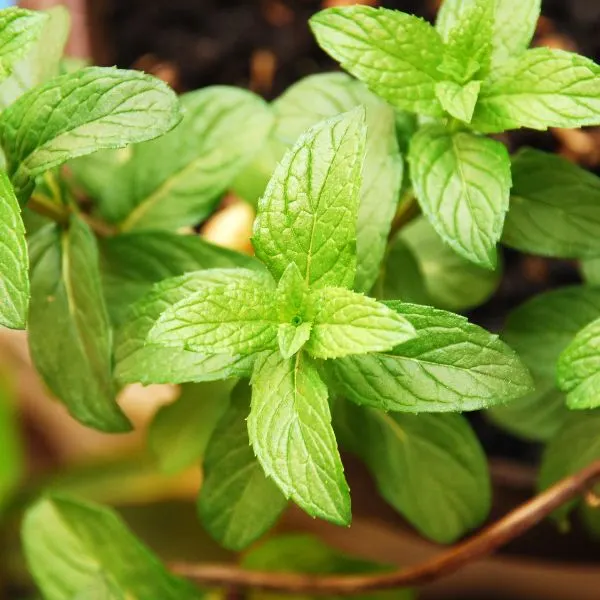
- Botanical name: Mentha
- Sun Requirements: Full sun to partial shade
- Soil Type: Moist, well-drained, and rich soil
Mint is particularly beneficial when planted in late summer, as it helps repel pests that are prevalent during this time.
Mint excels in pest control, making it an excellent companion for your collard greens, as that smell that we all know and love tends to keep away the type of insects that want to munch on your collard greens. Mint can help to keep pests like cabbage loopers, whiteflies, flea beetles, and aphids away but there is a small ‘catch’ if you want to choose this companion.
It’s best to pot the mint.
Mint is super useful, but it also spreads like wildfire if you aren’t careful. Thankfully, it is perfectly happy to live in a pot and while it’s there, sitting next to your collard greens, it will call out to ladybugs who will arrive and provide a little extra security service for your greens. The potting part does take a little extra time to set up, but frankly, the perks really make this companion planting option worthwhile!
2. Catnip
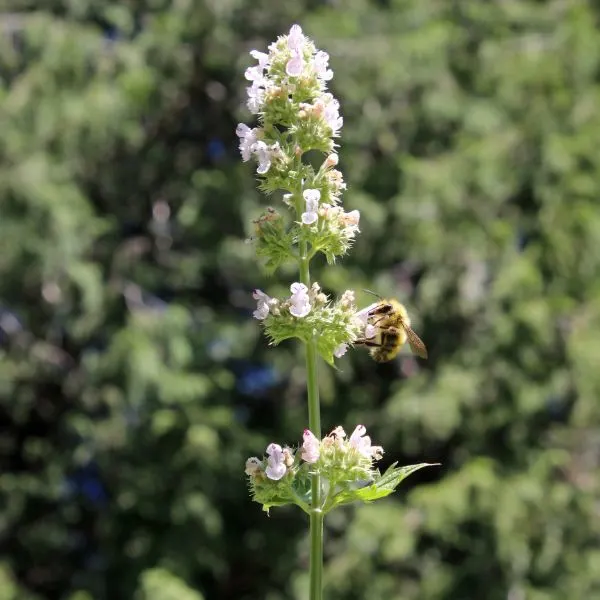
- Botanical name: Nepeta cataria
- Sun Requirements: Full sun
- Soil Type: Sandy or loamy, well-drained, slightly acidic
Catnip is particularly effective against cabbage worms, a common threat to collard greens. It’s used as an herbal medicine and of course, it’s also a nice treat for your indoor cats that will definitely be appreciated (although this companion choice won’t last long if you have outdoor cats). As a companion for your collard greens, it’s also quite useful to have around.
Aside from its amazing effects on cats, catnip produces natural oils that are quite adept at repelling pests such as flea beetles, cabbage loopers, and aphids. It only takes a little, so you might even add another companion to go with your collard greens to get the effects of the catnip and your third companion – it’s part of the fun, really, once you get the hang of strategic companion planting!
3. Rosemary
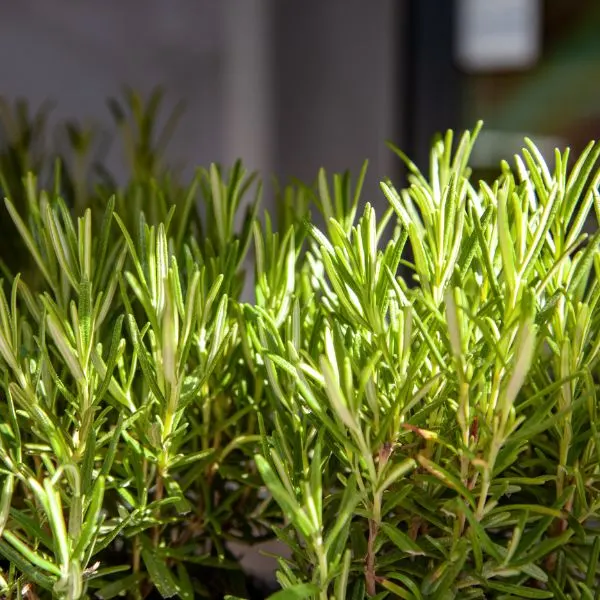
- Botanical name: Salvia rosmarinus
- Sun Requirements: Full sun
- Soil Type: Any well-draining soil, although clay or sandy loam is best
Planting rosemary alongside collard greens in early spring attracts beneficial insects early in the season, offering natural pest control.
Rosemary is a staple in many kitchens and for good reason. It may be used in multiple dishes and even acts as a natural preservative for things like homemade dog biscuits and other baked goods. As a companion plant for your collard greens, however, it can do quite a bit MORE.
Rosemary flowers in late spring or early summer, bringing lovely blue or white blooms that will attract bees but unlike a lot of pollinators, it tends to repel wasps and yellow jackets – which can come in useful if they’re a local pest where you live. Rosemary also repels a number of insects, such as whiteflies, cabbage moths, and loopers. You can even take some rosemary clippings and scatter them by your collard greens and this will deter slugs and snails! All in all, it’s a pretty good companion for your collards and well worth trying at home!
4. Dill
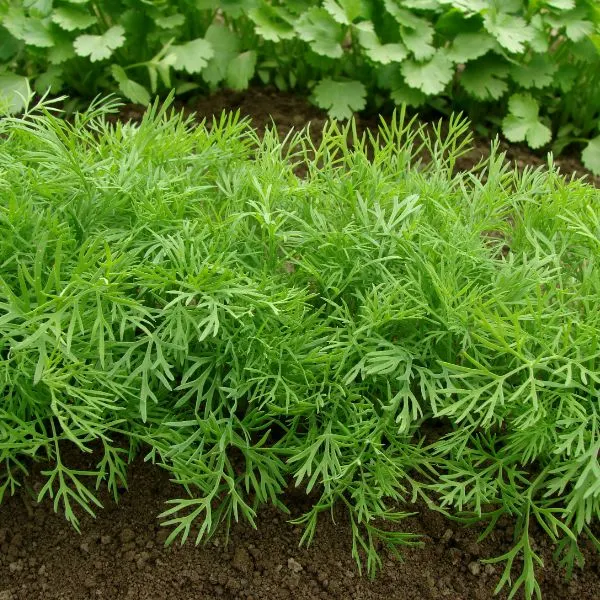
- Botanical name: Anethum graveolens
- Sun Requirements: Full sun
- Soil Type: Well-drained, slightly acid soil
You already know that dill goes well with eggs, potato salads, homemade creamy dressings, but do you know that it’s also a good garden buddy for your collard greens? Planted close to your collard greens, dill will benefit both plants in 2 ways.
First off, it attracts pollinators, but it will also call useful predatory insects to it, such as hoverflies, ladybugs, and predatory wasps that will go on patrol for both the dill and your collards and eat up a lot of pests that they find on the way. Dill will also repel some problem pests from its scent alone, including cabbage moths, loopers, and worms. It’s an excellent pairing in your garden and later on in your kitchen when you can whip up some collard rolls and yummy lemon dill sauce!
5. Thyme
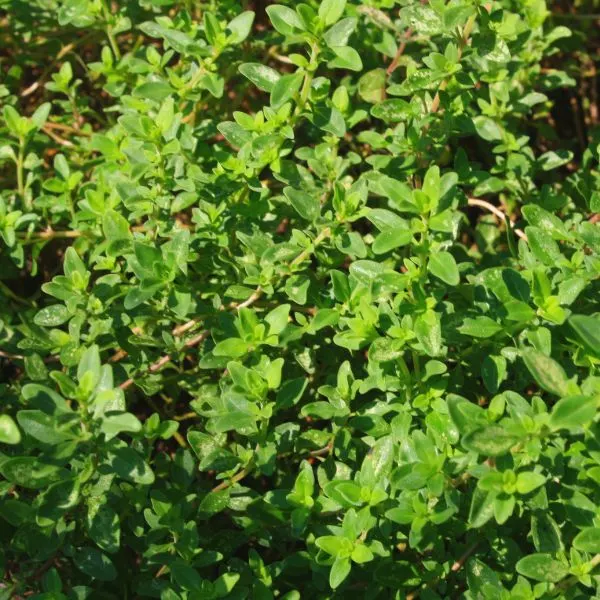
- Botanical name: Thymus vulgaris
- Sun Requirements: Full sun
- Soil Type: Average and well-draining loamy or sandy soil
Great for meats, soups, veggies, and even homemade soaps, Thyme is a useful and popular addition to many a garden, but it also makes a great neighbor for your collard greens if you’re willing to plant them together. If you do, the thyme will attract pollinators and useful bugs to create an active ‘security force’ to watch over both of the plants in the plot.
It will also repel flea beetles, cabbage moths, whiteflies, hornworms, maggots, mosquitoes, and MORE. There’s just something about that lovely scent that these pests cannot seem to abide. So, if you’re looking for a practical planting companion for your collard greens, then it might be the perfect time for thyme!
6. Chamomile
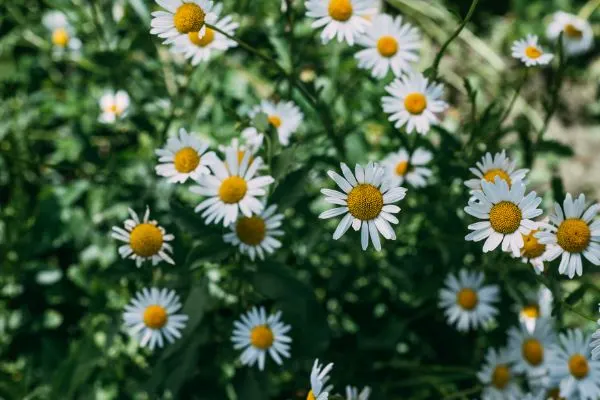
- Botanical name: Matricaria chamomilla
- Sun Requirements: Full sun
- Soil Type: Fertile, well-draining loam or sandy loam
Nothing smells quite as yummy as fresh chamomile – herbal tea packets simply can’t compare. Grown as a companion for your collard greens, you can get yourself a fresh supply of chamomile for home use and plenty of perks for your collard greens in the process!
The aesthetics are nice – White, yellow-centered chamomile flowers and their amazing scent, but that’s just the frosting on the cake. That heavenly scent and those lovely flowers will attract bees, hoverflies, and ladybugs, so that you’ve got more pollination in that part of the garden and predatory bugs watching nearby plants for delicious pests. That scent will also repel fleas, ticks, and mosquitoes, and some gardeners say that it will even add an extra zing of flavor to your collard greens.
Chamomile may even enhance the growth of new leaves and improve the health of lower leaves on collard plants, although further observation is encouraged to confirm these benefits.
While we can’t confirm the flavor boost, with all of the other perks that chamomile brings to the table it definitely can’t test it and find out firsthand!
Healthy veggies and delicious fruits
7. Onions
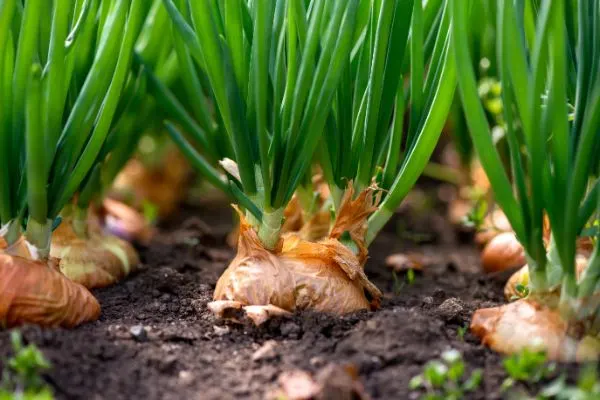
- Botanical name: Allium cepa
- Sun Requirements: Full sun
- Soil Type: Well-drained, fertile soil, with a pH 6.0-7.0
While they are kind of like that roommate that doesn’t bathe enough, onions make superb companions for your collard greens in the garden. Onions repel a large number of pests, such as aphids, carrot flies, cabbage loopers, Colorado potato beetles, and hungry bunnies!
When you add in that it won’t compete with your collard greens for resources and that it also has antifungal and antibacterial properties, then it’s just about a perfect companion plant for your greens. Just be sure that you won’t be planting beans there anytime soon – onions are tough plants and the
8. Mustard greens
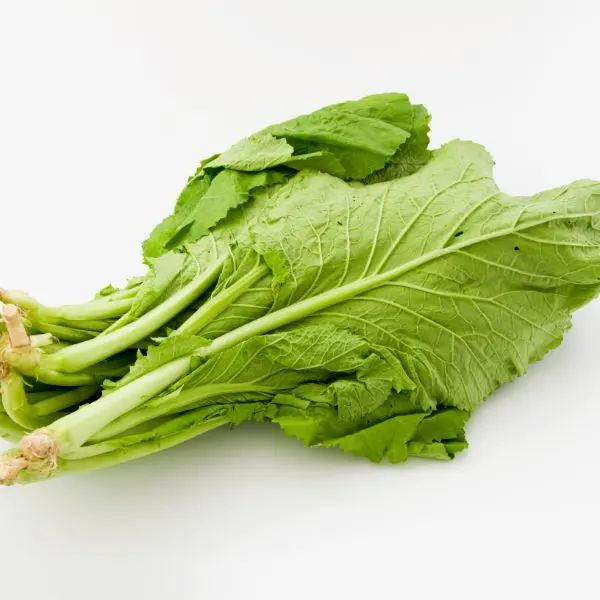
- Botanical name: Brassica juncea
- Sun Requirements: Full sun
- Soil Type: Fertile, well-drained soil with 6.5-6.8 pH
Mustard greens serve as an effective trap crop, drawing pests away from collard greens by attracting harlequin bugs.
An old companion planting trick that you can use when a particular pest is really ruining your favorite crops is the ‘trap plant’ – which is simply a companion plant that you’ve put in place to lure that pest away. With collard greens, that pest is the harlequin bug and you can do an excellent job of luring them away by planting mustard greens.
Simply encircle your collard greens with mustard greens and those harlequins will quickly take notice. Once they do, they’ll gravitate to the mustard greens and leave your collard greens alone. It’s a sacrifice, but sometimes you have to get crafty to get ahead of the pests and mustard greens work amazingly well for this!
9. Potatoes
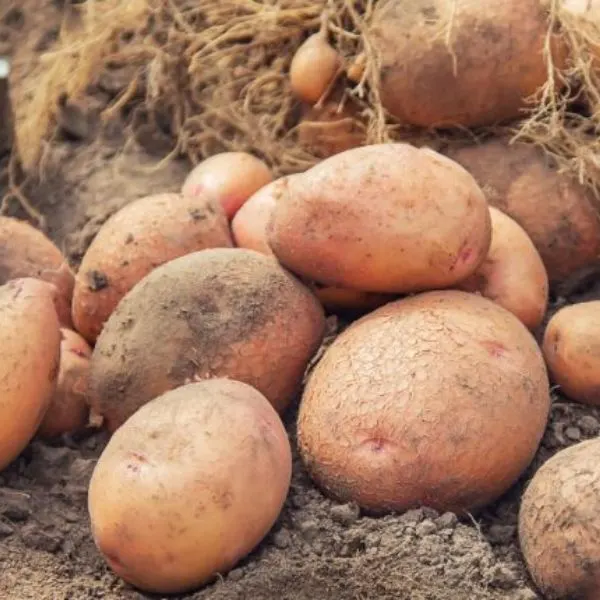
- Botanical name: Solanum tuberosum
- Sun Requirements: Full sun (can handle partial shade)
- Soil Type: Well-drained, sandy soil
Potatoes may be planted with your collard greens and will get along quite well with them. The reason is the difference in their root systems. They’ll basically be drawing from different levels of the soil and so even with potatoes taking up to 100 days to mature, they won’t be ‘hogging’ the nutrients that your collard greens will need to grow.
As far as additional perks, potatoes will loosen up the soil nicely, but beyond this it’s mostly an arrangement that is practical for saving space and which will not require much additional attention to maintain.
10. Celery

- Botanical name: Apium graveolens
- Sun Requirements: Full sun
- Soil Type: Loose, well-drained, organic-rich soil
If you love snacking on celery (and with peanut butter, it’s really a treat, just sayin’!), then you might consider planting it with your collard greens as these two will get along like gangbusters. Celery can repel a number of pests, with cabbage moths being one of the worst for your collard greens.
It’s only a minor perk, but a very nice one, so if you’ll be growing some celery anyway, then you might want to park it next to your collard greens – the cabbage moths should keep well away!
11. Garlic
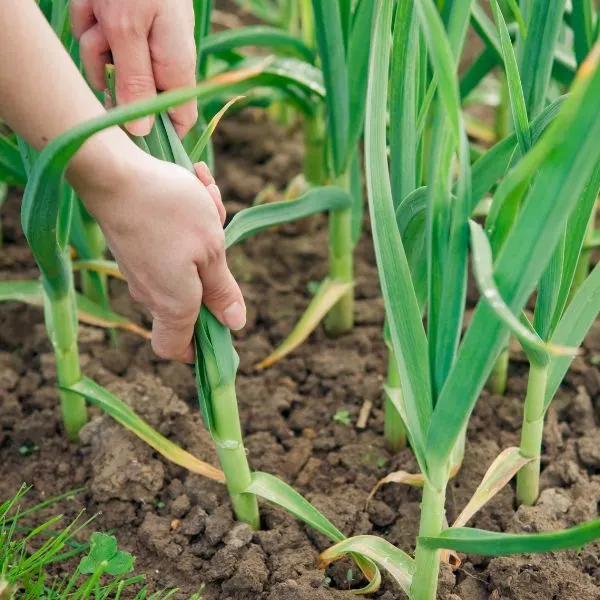
- Botanical name: Allium sativum
- Sun Requirements: Full sun
- Soil Type: Loamy and well-drained, with lots of organic matter
Garlic is one of those plants that you’ll definitely have in the garden already, so why not plant a little with your collard greens? Garlic brings some serious repellent powers to the table that your greens will surely appreciate. Able to warm off just about any pest that crawls or flies (although not burrowing insects), it can also keep hungry animals at bay such as rabbits or squirrels.
Also, while burrowing insects can still sneak through the ‘safety net’ that garlic provides, it will still add an antibacterial and antifungal property to the soil around it. It’s a great little pairing that really pays off come harvest time!
12. Beans
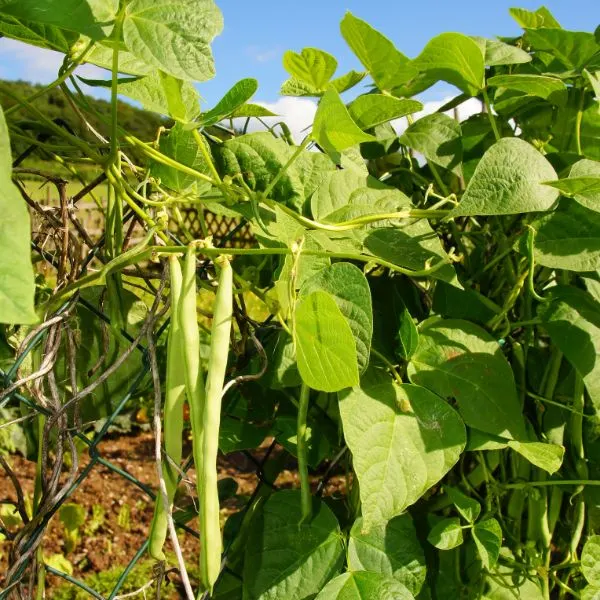
Both bush beans and pole beans are excellent companions for collard greens, providing nitrogen fixation in the soil, which enhances growth and yields. Their vertical growth habit also maximizes square footage in the garden.
Ornamental additions
Choosing companions that also prefer good drainage ensures that collard greens and their companions thrive together.
13. Nasturtium
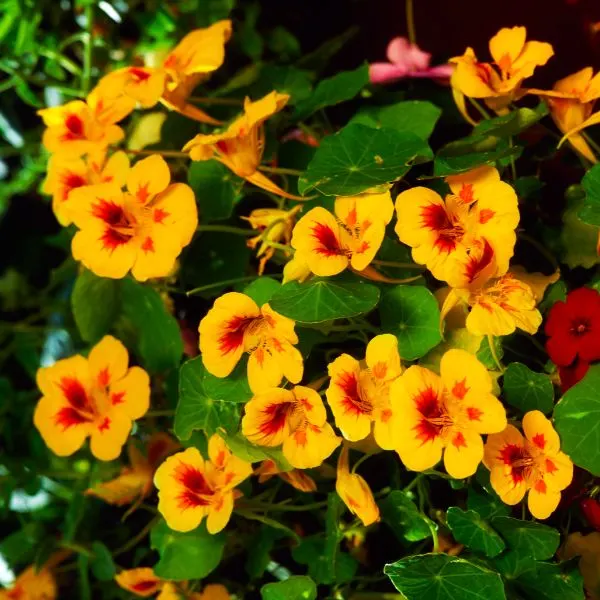
- Botanical name: Tropaeolum majus
- Sun Requirements: Full sun
- Soil Type: Fertile, well-drained soil
Nasturtiums add a lot of color to your garden but as companions, they REALLY pull their own weight. Starting off, they’ll create ground cover that can help to keep the soil moist like a living mulch, and when they flower they’ll attract pollinators and useful predatory insects to help patrol both the Nasturtium and your collard greens.
What’s more, the entire plant is edible, and while this is good news for your salads, it also means that the nasturtium will help to lure away aphids. The scent of the flowers will also serve to repel whiteflies, a few different types of beetles, cabbage loopers, and squash bugs as well. As companions go, you could do a whole lot worse than lovely nasturtium!
14. Marigolds

- Botanical name: Tagetes
- Sun Requirements: Full sun
- Soil Type: Well-drained, Loamy soil
Marigolds are another colorful option that can add a little extra security for your collard greens if you plant them close. Said to repel numerous insects, one really big boon that they bring to the arrangement is the chemicals they produce in soil. Marigolds secrete a substance that can kill root nematodes, so you’ll have a little extra insurance going on in the soil itself.
With a few planted around your collard greens as a lovely, living fence, you should be able to reap the benefits without overly shading your collard greens in the process. It’s a good-looking security solution, so consider planting your collard greens with some marigolds to keep them company – you’ll be happy that you did!
Similar to collard greens, Brussels sprouts also benefit from marigolds’ nematode-repelling abilities.
15. Cosmos
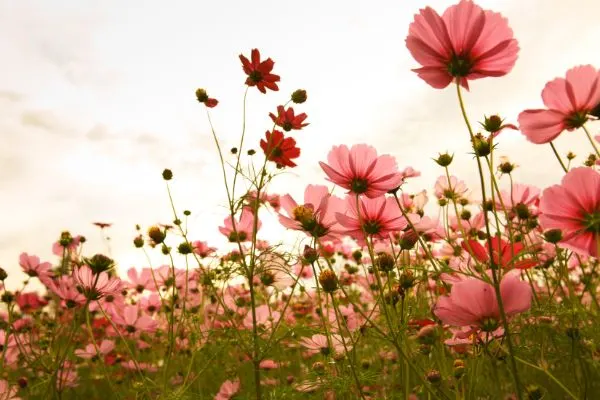
- Botanical name: Cosmos sulphureus
- Sun Requirements: Full sun (or partial shade in warmer climes)
- Soil Type: Chalky, sandy, or loamy soils
While cosmos are mostly good at repelling corn earworm, planting them next to your collard greens is still a great way to attract pollinators and useful insects. Ladybugs, hoverflies, lacewings, and wasps are all attracted to the scent of cosmos flowers, so you’ll have a pretty solid ‘security team’ to patrol both your cosmos and collard greens.
As far as the pollinators, bees and butterflies are quite fond of cosmos, so this ornamental option is a pretty solid choice all around!
16. Pansies
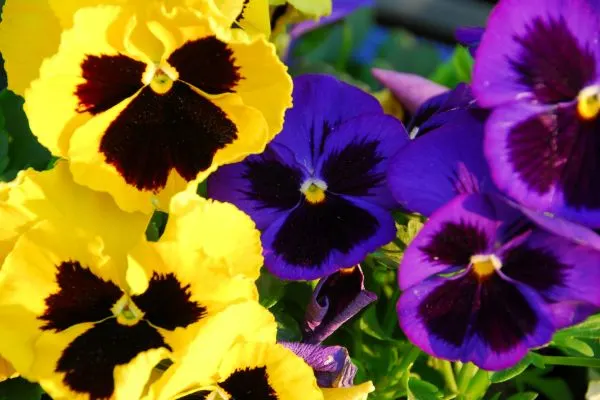
- Botanical name: Viola tricolor var. hortensis
- Sun Requirements: Full sun (partial shade okay in hotter climes)
- Soil Type: Fertile, well-draining soil
This companion planting option is unabashedly ornamental but the effect is really worth it! Pansies are tiny plants, so they aren’t going to shade your collard greens, and when they are flowering their own coloration and that of your collards is really a sight to see.
Again, it’s mostly an ornamental companion planting option – the only perks are that you’ll attract pollinators and the pansies might lure some hungry aphids away from your collard greens. That said, it really looks stunning so we highly recommend that you give this pairing a try sometime!
Bad companions for collard greens
Now that we’ve gone over some great companion plants for collard greens, it’s time to take a look at some of the WORST. Each of the plants below is considered a poor fit for planting next to your collard greens and for each we’ll explain why that is the case. Let’s take a look!
1. Lettuce
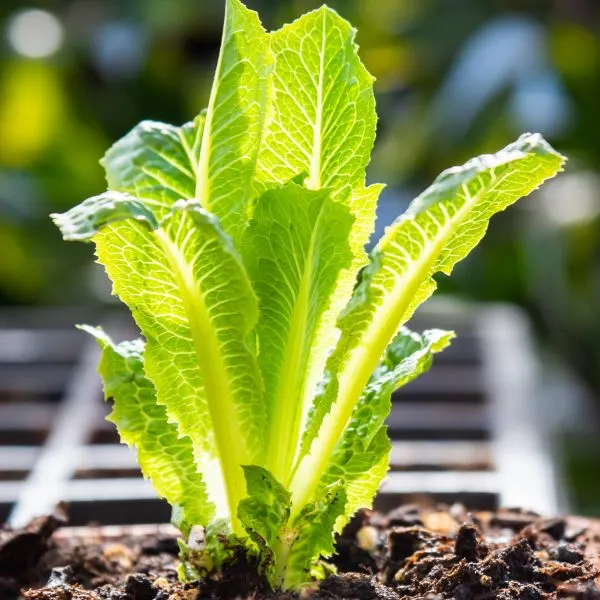
While they are both leafy and yummy, lettuce and collard greens should not be planted next to each other. That’s because your collard greens produce chemicals in the soil that can actually stunt the growth of your lettuce. As such, it’s better to plant celery or another more compatible companion to avoid this issue altogether.
2. Strawberries
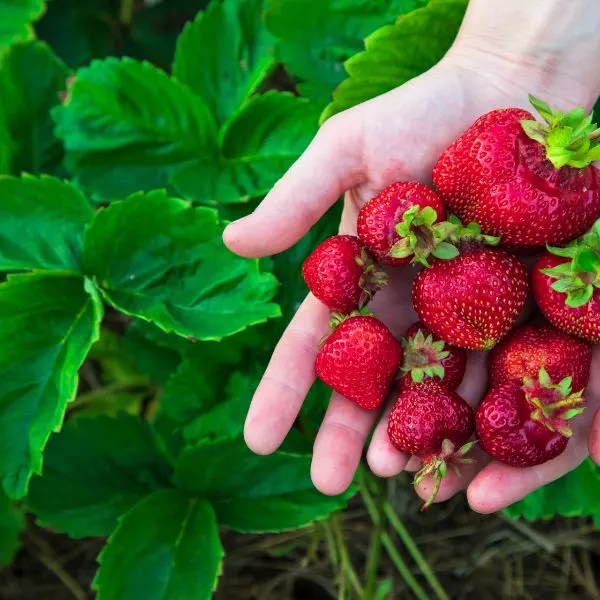
While strawberries will grow with collard greens, it’s not a good idea to plant them together. The problem in this pairing is literally a small one – it’s aphids. These industrious little pests are going to go after your strawberries wherever they are, but with collard greens also present they’ll be sure to grow in numbers and feast on BOTH. It’s better to simply keep them separated or even better, separated and paired with their own aphid-deterring companion plants.
3. Corn
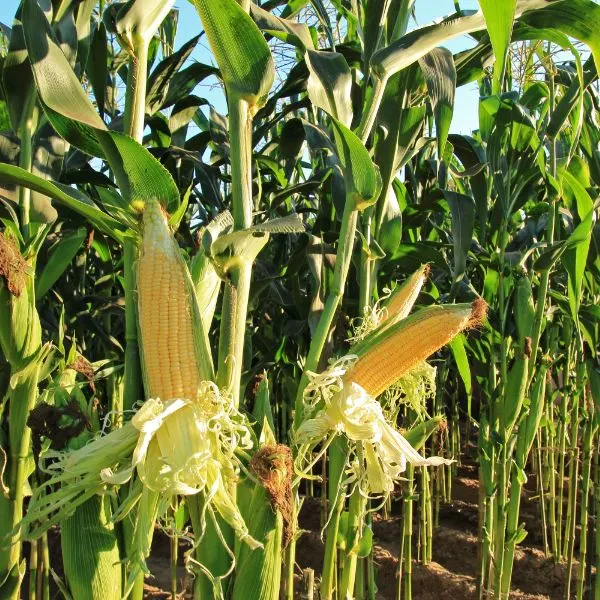
Corn and collard greens definitely do not make for the best of friends in your garden. Starting off, corn is a fast grower and gets very tall, so in a short period of time it will be shading your collard greens. What’s more, it’s also quite the hungry plant, so it’s going to make an enormous hit on soil resources and the odds are that your collard greens are going to suffer for it. They simply do NOT work well together, so be sure to keep these two separated for best results come harvest time!
4. Sunflowers
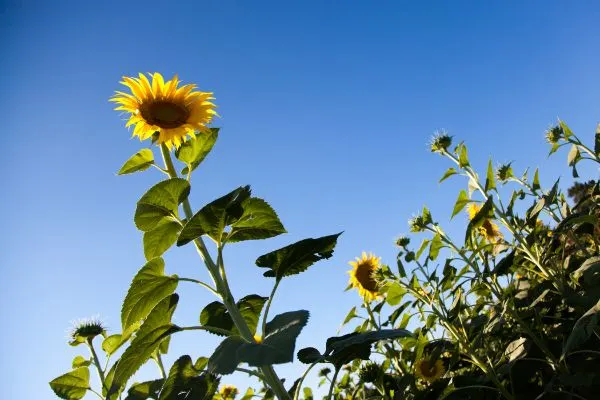
Sunflowers, much like corn, grow up fast and tall and since your collard greens need plenty of direct sunlight, then this is not a very neighborly scenario. Granted, collard greens can grow in partial shade, but with sunflowers present there’s a very real risk that your green won’t get enough sunlight. It’s a much safer option to give each of them their own little spot in the garden where they may bask in the sun all they like.
5. Any other Brassicas
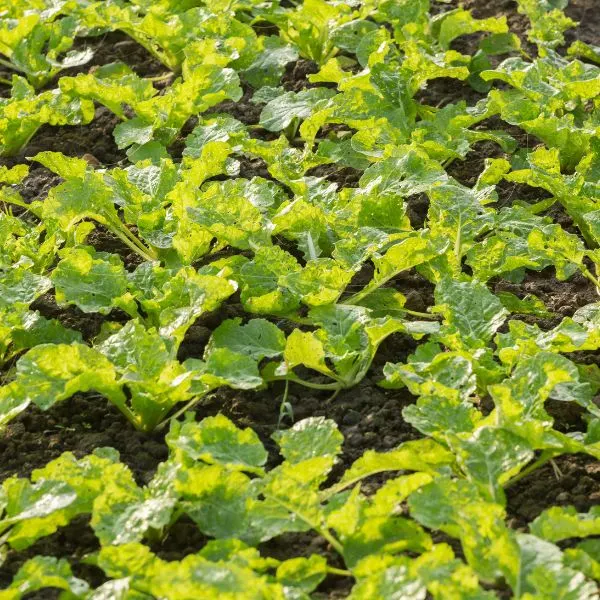
Collard greens should not be planted with other brassicas. While it sounds good on paper to plant a bunch of brassicas in one spot, they’ll fight over nutrients if you do. To make things worse, pests that prey on brassicas are going to notice the concentration of them and will be sure to congregate and munch as much of your plants as they can.
For healthy brassicas, keep them separated – there are plenty of better companions for your collard greens and you don’t want a pest infestation in your garden!
Common questions
Before we wear out our welcome, we wanted to share a few frequently asked questions on the subject of companion planting with collard greens so that you’ll have a little more info before you go. Below you will find some of the questions that we get asked the most and we hope that you’ll find this information useful for your own companion planting experiments!
What are the worst companion plants for collard greens?
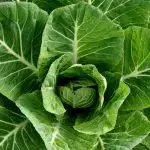
Like some human families, certain plant families like brassicas simply do not play well together, and so other brassicas tend to make for the WORST companions for your collard greens. They will fight tooth and nail for resources, for one thing, and as they are all heavy eaters who need a lot of love, sunlight, and nutrients, the end result at BEST will be a poor harvest.
It can be much worse, however, as putting all your brassicas in one place is basically like laying out a Thanksgiving dinner for pests, and short of encasing your brassicas in a bubble, pests can and WILL find them and you won’t like the end result.
What are some other good collard greens companion plants?
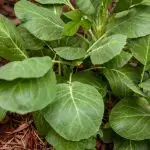
Collard greens get along quite well with a wide range of companion planting options, but to name a few more you could try Southernwood, wormwood, hyssop, peppermint, and one of the best we’ve saved for last – tomatoes – and we’ll address those immediately to explain the reasons ‘why’ you should try them.
What are the best companion plants for collard greens?

If we had to pick our best and favorite companion for collard greens, it would be tomatoes – hands down. A popular method of companion planting these two involves planting 4 collards around and at the base of your tomato plant and creating a whole row of these little collard/tomato diamonds.
Your collards will start forming some natural ground cover and this is going improve the water retention of the soil, creating a cool base for the tomatoes without shading them, and it also provides an attractive haven for toads, ladybugs, and other predators that will hide in this cover and watch out for your veggies. On the flip side, Tomatoes can provide shade to the collards making them a good companion in warmer months.
Your collards will also repel a number of pests that tomatoe don’t like and as tomatoes create their vine networks upward on the trellis, they’ll give your collards some occasional shade when it’s hot outside and both plants can produce excellent yields even with a scorcher of a summer!
Try this companion planting option on your own some time and you’ll see what we mean – there’s a reason why so many gardeners love this particular pairing!
In Conclusion
A quick note before we wrap up, for those starting seeds indoors, employing grow lights can give collard greens and their companion plants a healthy start, especially in regions with colder climates or shorter growing seasons.
In this article we’ve explored some of the best (and worst) companion plants for your collard greens and we hope that you’ve found a few favorites that you’re inspired to try. A little rosemary, for instance, can call pollinators and deter certain pests, and a few clippings from these can further help keep out slugs.
Nasturtiums look amazing and can attract beneficial insects and even lure pesky aphids away from your collards, while also providing a peppery burst of flavor if you want to use their flowers in your salads. Keep in mind that these are just single pairing options — once you get a feel for it, then you can try planting 3 or even 4 companions together and some of the combos will definitely be keepers! So, be sure to try your hand at a little companion planting and see what you think – when harvest time rolls around, you’ll be very happy that you did!
More plant guides
